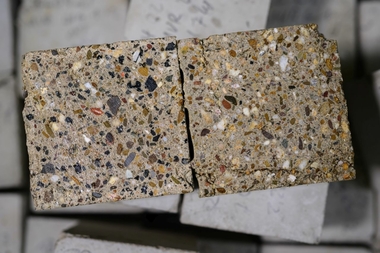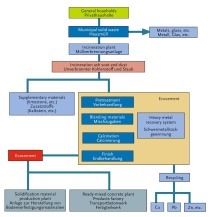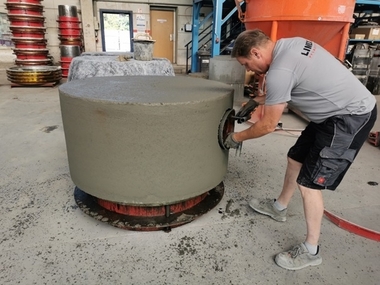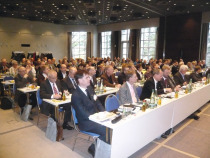Utilization in concrete construction elements
In Germany, waste incineration plants yearly produce around 6 million tons of slag and grate ash. In the past, carefully monitored incineration ashes with constant product properties were often utilized as substitute construction material in industrial and commercial construction, in landfill construction, as well as in road and path construction. Utilization of the ash recovered from incineration plants, however, can have negative consequences on groundwater conditions. Incineration ash may in fact also contain environmentally hazardous substances that can be transported into ground water and waterways. To prevent pollution of groundwater, the German Water Act imposes regulations. To enable utilization of incineration ash for construction purposes, mineral mixes also added to incineration ash are generally subjected to quality control.
In the first step in processing incineration ash, it is subjected to mechanical dry processing to separate ferrous and non-ferrous metals, which are subsequently returned to the reusable materials cycle. The remaining constituents of the incineration ash would normally have to be cost-intensively disposed of in landfills. In order to enable utilization of these constituents as well, special treatment processes are available. The slags are first washed and then separated in downstream processes. Glass and aluminum can be extracted, notably reducing the impurity content. Further downstream processes include leaching procedures that reduce elutable heavy metals and salts. The objective of these mostly complex procedures is to enable utilization of the remaining mineral fraction as secondary raw material in the manufacture of concrete construction elements. This procedure enables elimination of expensive disposal in landfills, closing of material cycles, and preservation of the natural occurrence of medium-sized and coarse aggregates. Accordingly, the utilization of incineration ashes is not only of ecological but also of great economic significance.






